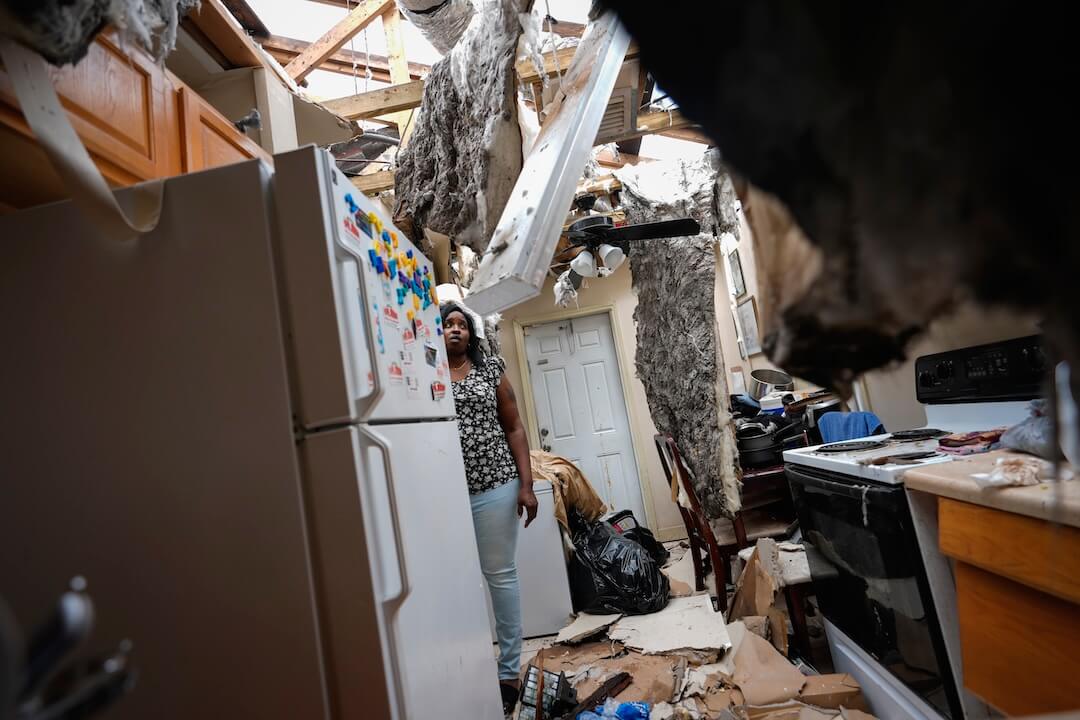 Covering COVID-19 is a daily Poynter briefing of story ideas about the coronavirus and other timely topics for journalists, written by senior faculty Al Tompkins. Sign up here to have it delivered to your inbox every weekday morning.
Covering COVID-19 is a daily Poynter briefing of story ideas about the coronavirus and other timely topics for journalists, written by senior faculty Al Tompkins. Sign up here to have it delivered to your inbox every weekday morning.
We expected that this week, the Centers for Disease Control and Prevention would hand down guidelines for vaccinated people. The promise was that the guidelines would help people know what they could safely do once they got their shots.
But here we are on Friday and we have no guidelines, and now the CDC says it is holding off on publishing them because they are “still being finalized.” It is possible that the CDC will release the guidelines before the weekend.
Insiders say the guidelines will likely tell people who have been vaccinated that they can safely gather with other fully vaccinated people without wearing masks or socially distancing. It is also likely the guidelines will tell vaccinated grandparents that they can safely hug their grandkids. But don’t expect a wholesale greenlight, and the guidelines will likely tell even vaccinated people to keep wearing masks while out in public, to not gather in big groups and to socially distance.
Dr. Anthony Fauci, who has been in on drafting the guidelines, said something similar earlier this week when he said “doubly vaccinated” Americans could gather within the home safely. He said:
I use the example of a daughter coming in from out of town who is doubly vaccinated, and a husband and wife doubly vaccinated, and maybe a next-door neighbor who you know are doubly vaccinated.
Small gatherings in the home of people, I think you can clearly feel that the risk — the relative risk is so low that you would not have to wear a mask, that you could have a good social gathering within the home.
When the CDC does issue the guidelines, we will be watching to see if they say much about when and how fully vaccinated people can safely travel. You can imagine that if the guidelines warmed up to the idea of vaccinated people flying or cruising, it would be great news for the travel industry.
But judging by President Biden’s comments this week, whatever guidance the CDC offers will likely be guarded and cautious. CDC Director Dr. Rochelle Walensky said on Monday:
I want to really keep our eye on the fact that … cases are increasing right now, slightly. The goal is not to sort of open up travel, open up all things because … we’re scaling up vaccination. The goal in those first 100 days has always been to sort of make sure that we are in a place to be out of this pandemic.
The delay is particularly interesting in the wake of President Joe Biden’s verbal skirmish this week with the governor of Texas after that state reopened businesses and dropped mask mandates. And a couple of weeks ago, the CDC offered new guidelines to safely reopen schools that teachers said did not go far enough to protect school workers, while others say those guidelines are too restrictive.
Politico says the delay followed a series of meetings and calls involving the White House’s COVID-19 task force and other top administration officials in the last couple of days.
There is no evidence to suggest that the Biden White House is trying to suppress the CDC guidelines or override the judgement of CDC scientists.
There’s been an 18% increase in drug overdose deaths in the pandemic

Fentanyl-laced pills collected during an investigation. (U.S. Attorneys Office for Utah, via AP)
We have known this was unfolding, but now we can see clearly how bad America’s drug overdose problem has become in the depths of the pandemic.
The (Louisville) Courier-Journal reports:
More Americans are dying from overdoses during the coronavirus epidemic than ever before, and one of the biggest threats is disguised as a safe tiny blue pill, according to a new Drug Enforcement Administration report.
More than 83,000 people died from an overdose in the 12-month period ending in July of 2020 — the highest amount of overdose fatalities ever recorded, according to the U.S. Centers for Disease Control and Prevention.
That’s more than an 18% increase from the overdose death toll during the 12-month period ending July 2019.
Fentanyl, a manmade opioid, remains a top killer, according to the DEA’s annual National Drug Threat Assessment, and is sometimes dyed blue and stamped to look like the prescription pain pill oxycodone or OxyContin.
The DEA’s data comes as part of the annual National Drug Assessment. DEA acting Administrator D. Christopher Evans said:
“This year’s report shows the harsh reality of the drug threats facing communities across the United States.” “While the COVID-19 pandemic plagues this nation, so, too, do transnational criminal organizations and violent street gangs, adjusting to pandemic restrictions to flood our communities with dangerous drugs.”
Just as an example, KUSA in Denver talked with Dr. Jim Caruso, the chief medical examiner and coroner for the city and county of Denver. Caruso said fentanyl deaths in Denver doubled between 2018 and 2019. Then they tripled between 2019 to 2020, to 156 fentanyl-related deaths. KUSA explains:
Law enforcement said people have been buying what they think are prescription pills but are actually fake pills laced with fentanyl. The buyers have no idea that’s the case.
The DEA said the counterfeit pills are cheaper. After testing pills seized from across the country, the DEA found 26% contain a lethal dose of fentanyl. And in Denver, it’s not just about the number of seizures but about the size of what police find.
“Tens of thousands of pills seized at one time,” said Commander Paul Jimenez with the Denver Police Department.
“People think they are getting a prescription medication,” added Jimenez. “That one dose can be fatal, and we are seeing that.”
The CDC recently warned that overdose deaths were already rising before the pandemic and that the situation was becoming more dire.
“The disruption to daily life due to the COVID-19 pandemic has hit those with substance use disorder hard,” said CDC Director Robert Redfield, M.D. “As we continue the fight to end this pandemic, it’s important to not lose sight of different groups being affected in other ways. We need to take care of people suffering from unintended consequences.”
[the_ad id=”667826″]
The rise in meth use, again
Both police and the people who run treatment centers say methamphetamine use is rising again.
ABC12 in Flint, Michigan, quotes Denise Terryah, a recovery coach at the Flint Odyssey House: “It’s cheaper. Easier to come by, and if you’re desperate enough you can make it yourself. And I was also told by one person the high is quicker and lasts longer.” Terryah estimates roughly 60% of people seeking help over the past six months are addicted to meth.
The DEA says overdose deaths involving psychostimulants, such as meth, increased by nearly 35% during the last year and now surpasses cocaine-involved deaths.
The Body, an HIV/AIDS resource site, looks at the link between COVID-induced loneliness and meth use:
In South Texas, advocates are expressing alarm at how a rising rate of meth use is causing a spike in HIV rates, despite — or possibly because of — the COVID-19 crisis.
Oscar Lopez, CEO of the Texas-based Poderosos said, “Folks may be sheltering in the daytime — but at night, people are lonely, losing their jobs and housing, and hooking up with strangers online,” Lopez said. And very often, they’re using meth when they hook up, which can put their health and lives at risk in several ways.
What is ‘Moderna arm?’
Some people, maybe even a lot of people, are reporting a mild itchy rash a week or two after they get the Moderna COVID-19 vaccine. It is a harmless if annoying side effect. This week, new data says the second shot will not create a worse rash. USA Today was the first place I saw any mention of this and updated their reporting:
“We’re encouraging people who’ve had this reaction to go in and get their second shot,” said Dr. Kim Blumenthal, an allergist, epidemiologist and professor of medicine at Harvard Medical School who’s tracking the reaction.
“There was concern that if you had the reaction on the first dose, it might reoccur with the second and possibly be worse. But we now have followed enough cases to know that’s not happening.”
The rash has not shown up for the recipients of the Pfizer or Johnson & Johnson vaccines and seems to be more common among women and people under age 60. It usually lasts about a week. The clinical phrase is “delayed local large reaction” because it happens even after other symptoms subside.
The new study data just published in the New England Journal of Medicine includes a photo gallery of “Moderna arm” rashes.

(New England Journal of Medicine study by Kimberly G. Blumenthal, M.D. and others)
Pandemic fuels procrastination
National Geographic says the pandemic is leading to more procrastination. You can read more about that if you get around to it.
To control the virus, open bus windows
I am not sure if anybody will follow this advice, but new studies say if buses could open windows it would do a lot to make it safer to ride on mass transit. That plus wearing masks.
It is a recommendation that school buses should consider, too. The tests showed that improving air filtration helps, and opening the front and back doors at every stop helps a little bit, but masks and open windows are really effective and cost next to nothing.
[the_ad id=”667872″]
Airplanes in flight have really low particulate levels
On the subject of mass transportation and air quality, new research from the Georgia Institute of Technology says, “If you’re looking for an indoor space with a low level of particulate air pollution, a commercial airliner flying at cruising altitude may be your best option. A newly reported study of air quality in indoor spaces such as stores, restaurants, offices, public transportation — and commercial jets — shows aircraft cabins with the lowest levels of tiny aerosol particles.”
I suppose they could achieve the same results if they could open the windows on those planes cruising along at 550 mph.
Robots get sidewalk rights

A Postmates electricity-powered autonomous delivery robot is seen on May 10, 2020, during the coronavirus pandemic in Los Angeles, Calif. (zz/GOTPAP/STAR MAX/IPx)
Axios ran an interesting piece about how cities are increasingly offering generous sidewalk “access rights” to robots. The debate over sidewalk access is similar to the conversations we had about drone access to the skies above cities and populated areas as robot companies want to use bike lanes, for example.
10 states have passed statutes that allow delivery robots to roll on city sidewalks. Axios’ Jennifer A. Kingson includes these passages:
States like Pennsylvania, Virginia, Idaho, Florida and Wisconsin have passed what are considered to be liberal rules permitting robots to operate on sidewalks — prompting pushback from cities like Pittsburgh that fear mishaps.
In Pennsylvania, robot “pedestrians” can weigh up to 550 pounds and drive up to 12 mph.
“Opposition has largely come from pedestrian and accessibility advocates, as well as labor unions like the Teamsters,” per the Pittsburgh City Paper.
The laws are a boon to Amazon’s Scout delivery robot and FedEx’s Roxo, which are being tested in urban and suburban settings.
“Backers say the laws will usher in a future where household items show up in a matter of hours, with fewer idling delivery vans blocking traffic and spewing emissions,” per Wired.
You may also be seeing these robot deliveries on college campuses. Starship Technology has its “coolers on wheels” on more than 15 college campuses and Axios says the company is moving into grocery delivery, too.
[the_ad id=”667878″]
We’ll be back Monday with a new edition of Covering COVID-19. Are you subscribed? Sign up here to get it delivered right to your inbox.







